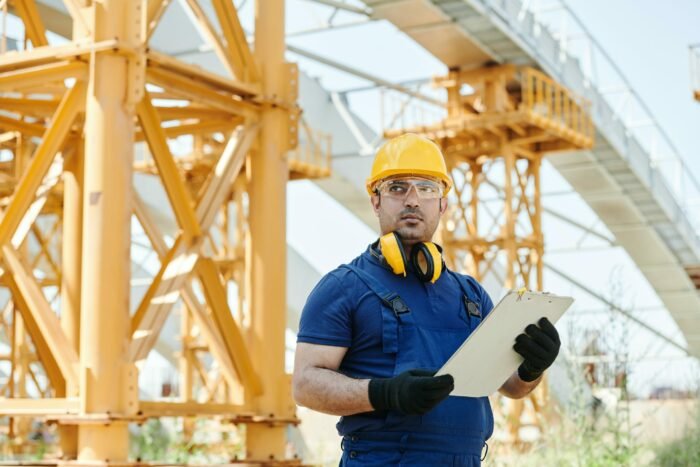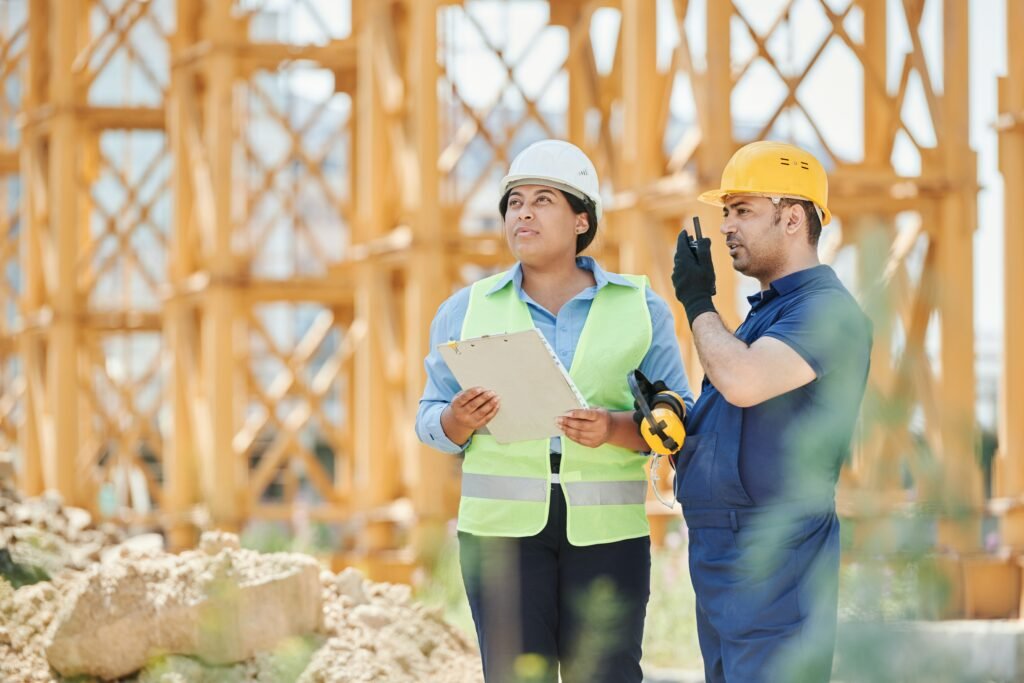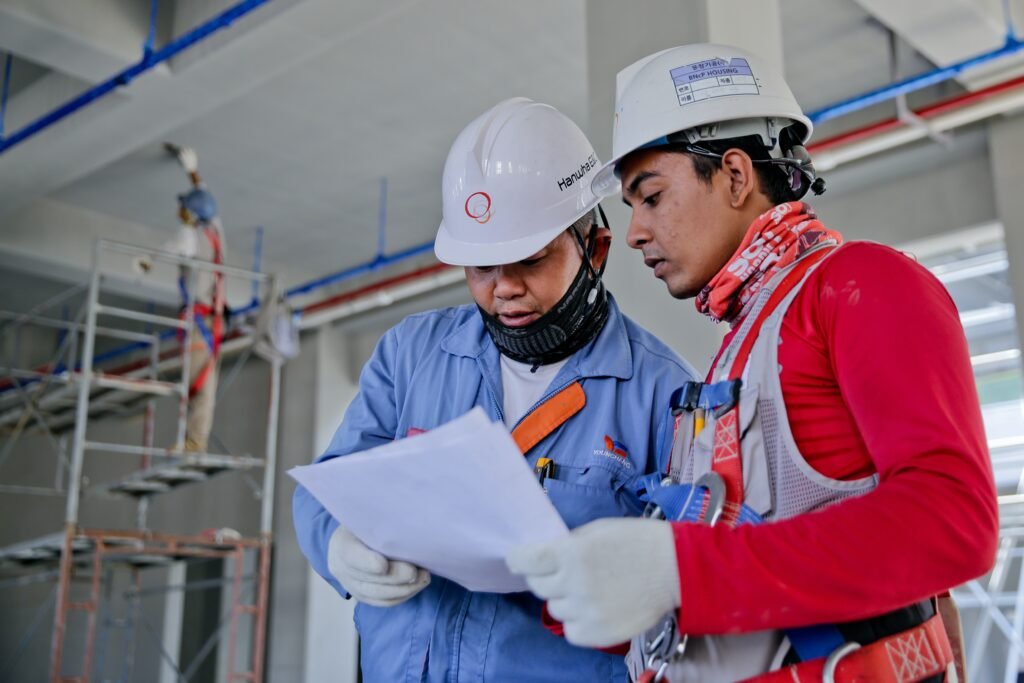When it comes to working on an oil rig, safety should always be the number one priority. The nature of this industry carries inherent risks, but with the right strategies in place, these risks can be minimized and managed effectively. In this blog post, we will explore some key management strategies that oil rig operators can implement to ensure the safety and well-being of their workers.
From rigorous inspection and maintenance protocols to comprehensive emergency response planning, we’ll delve into proactive measures that are crucial for mitigating risks on oil rigs. Additionally, we’ll discuss the importance of training and education in building a skilled workforce equipped to handle any challenges that may arise. And let’s not forget about technology integration – innovative tools and systems play a significant role in reducing hazards on offshore platforms.
So join us as we dive deep into the world of effective oil rig management strategies for safety. Whether you’re an industry professional or simply interested in learning more about how these operations work behind-the-scenes, you’ve come to the right place! Let’s get started by exploring best practices for rig inspection and maintenance.
Statistics related to Effective Oil Rig Management Strategies for Safety
Here are some statistics:
- According to a report by USA Today, the fatality rate among oil and gas extraction workers is about 25.1 deaths per 100,000 workers per year, which is about seven times higher than the average for all industries.
- A new report by the National Academies of Science, Engineering, and Medicine concludes that offshore oil and gas operations have become safer since the 2010 Deepwater Horizon disaster. The report highlights several industry improvements, including the establishment of the Bureau of Safety and Environmental Enforcement, mandating safety and environmental management system programs in offshore operations, and easing access to safety data.
- A study published in the National Center for Biotechnology Information suggested that oil and gas companies should maintain a positive perception of health and safety culture to improve workplace safety. The study also highlighted that the oil and gas industry has a higher fatality rate than other industries.
Effective Oil Rig Management Strategies for Safety
1. Safety First: Prioritizing Effective Oil Rig Management for Worker Well-being
Safety is paramount in any workplace, but it holds even greater importance on an oil rig. With the inherent risks involved in offshore operations, prioritizing effective oil rig management strategies for worker well-being is absolutely crucial:
- One key aspect of ensuring safety on an oil rig is through rigorous inspection and maintenance protocols. Regular inspections allow operators to identify potential hazards before they escalate into major issues. By conducting thorough checks on equipment, machinery, and infrastructure, any signs of wear or damage can be detected early on and addressed promptly.
- In addition to inspections, proactive maintenance measures are essential for keeping everything running smoothly. This includes routine servicing of machinery, regular replacement of worn parts, and adherence to manufacturer guidelines for upkeep. A well-maintained rig not only reduces the risk of accidents but also enhances overall operational efficiency.
- Emergency response planning is another vital component of effective oil rig management. It’s essential to have robust plans in place that outline procedures for various emergency scenarios such as fires, spills or medical emergencies. Conducting regular drills ensures that all personnel understand their roles and responsibilities during a crisis situation.
- Training and education play a pivotal role in building a skilled workforce capable of handling the challenges inherent in offshore operations safely. Offering comprehensive training programs equips workers with the knowledge needed to operate equipment correctly while adhering to strict safety protocols. Continuous education keeps them abreast of the latest industry standards and best practices.
- Technology integration has revolutionized safety measures within the oil industry. Innovations such as remote monitoring systems allow real-time data collection from various sensors placed throughout the rig – enabling operators to detect abnormalities instantly and take immediate action if necessary. Drones are used for aerial surveillance while augmented reality tools assist workers in visualizing complex tasks beforehand – reducing human error significantly.
- Fostering a safety culture among all personnel is fundamental to successful oil rig management strategies for worker well-being. Everyone must be encouraged to embrace responsibility and accountability when it comes to following safety guidelines.
By fostering an environment where safety is ingrained in every aspect of operations, the risk of accidents can be dramatically minimized.
2. Rig Inspection and Maintenance: Proactive Strategies for Ensuring Safety
When it comes to maintaining safety on oil rigs, proactive strategies are crucial. Rig inspection and maintenance play a vital role in identifying potential hazards and ensuring the well-being of workers. Regular inspections help detect any equipment malfunctions or structural weaknesses that could compromise safety:
- One key strategy is to implement a comprehensive inspection schedule that covers all aspects of the rig, from the drilling equipment to the living quarters. This includes routine checks of pipes, valves, electrical systems, fire suppression systems, and more. Any signs of wear or damage should be addressed immediately to prevent accidents.
- In addition to regular inspections, preventive maintenance is essential for keeping the rig in optimal condition. This involves routine servicing and repairs as needed based on manufacturer recommendations. Lubricating moving parts, replacing worn-out components, and testing safety devices are just some examples of preventive measures that can significantly reduce risks.
- To ensure effective rig inspection and maintenance, it’s important to have skilled technicians who understand industry standards and regulations. Training programs should be implemented to educate personnel on proper inspection techniques and best practices for maintaining equipment integrity.
- Furthermore, utilizing advanced technology can enhance rig inspection processes by providing real-time data collection capabilities. Drones equipped with cameras can perform visual inspections more efficiently while minimizing human exposure in hazardous areas. Additionally, sensors embedded within machinery can monitor performance metrics remotely alerting operators when anomalies occur.
By prioritizing rig inspection and maintenance as part of an overall safety management plan oil companies can create a culture where worker well-being is paramount.
3. Emergency Response Planning: Preparedness for Mitigating Risks on Oil Rigs
In the challenging and high-risk environment of oil rigs, emergency response planning is crucial to ensure worker safety and mitigate potential risks. Being prepared for any unforeseen situation is essential to minimize the impact of accidents or emergencies:
- One key aspect of emergency response planning is conducting thorough risk assessments. Identifying potential hazards specific to oil rig operations allows companies to implement adequate preventive measures and develop effective contingency plans. These plans should cover various scenarios such as fire outbreaks, equipment failures, hazardous material spills, and personnel injuries.
- Another important element in emergency response planning is establishing clear communication channels. In a crisis situation, quick and accurate information exchange can be critical for making timely decisions that protect lives and assets. Implementing reliable communication systems like two-way radios or satellite phones ensures seamless coordination between different teams on the rig.
- Regular drills and training exercises are also vital components of emergency preparedness. By simulating real-life scenarios, workers become familiar with evacuation procedures, first aid techniques, firefighting protocols, and other necessary skills that can save lives during an emergency. Training should be ongoing to keep employees updated on current best practices.
- Collaboration with local authorities and emergency services should not be overlooked either. Establishing strong partnerships enables swift response times in case outside assistance is required during an incident beyond the capabilities of onsite resources alone.
By prioritizing comprehensive emergency response planning on oil rigs, companies demonstrate their commitment to protecting workers’ well-being while minimizing operational disruptions caused by emergencies or accidents.
4. Training and Education: Building a Skilled Workforce for Safe Operations
Training and education play a crucial role in building a skilled workforce for safe operations on oil rigs. By providing workers with the necessary knowledge, skills, and resources, companies can empower their employees to make informed decisions and navigate potential hazards effectively:
- One key aspect of training is ensuring that all workers are familiar with safety procedures and protocols. This includes emergency response plans, evacuation procedures, and proper use of personal protective equipment (PPE). Additionally, workers should be trained on how to identify potential risks or hazards specific to their work environment.
- Regular training sessions should also focus on enhancing technical skills relevant to oil rig operations. This may include specialized courses on equipment maintenance, troubleshooting techniques, or advanced drilling technologies. By investing in continuous learning opportunities for employees, companies can ensure that their workforce remains up-to-date with industry best practices.
- Furthermore, incorporating simulation exercises into training programs can help simulate real-life scenarios in a controlled environment. These simulations allow workers to practice responding to emergencies such as fire outbreaks or equipment malfunctions without putting themselves at risk. Such hands-on experiences enable them to develop critical thinking abilities and enhance their problem-solving skills.
- In addition to formal training programs, ongoing education initiatives should be encouraged within the organization. This could involve hosting workshops or seminars where experts share insights about new developments in the industry or emerging safety trends. Providing opportunities for employees to expand their knowledge base not only improves job performance but also fosters an environment of continuous improvement.
By prioritizing training and education initiatives aimed at building a skilled workforce equipped with comprehensive safety knowledge and technical expertise, oil rig operators can significantly reduce the likelihood of accidents occurring on-site while promoting worker well-being.
5. Technology Integration for Safety: Harnessing Innovation to Reduce Hazards
In the fast-paced world of oil rig operations, staying ahead of potential hazards is crucial. This is where technology comes into play, revolutionizing safety practices and mitigating risks on oil rigs. By integrating innovative solutions, such as advanced monitoring systems and automation tools, companies can create a safer environment for their workers:
- One key aspect of technology integration is the use of sensors and real-time data analysis. These cutting-edge technologies enable early detection of problems by continuously monitoring vital parameters like temperature, pressure, and equipment performance. With this information at hand, operators can identify potential failures or malfunctions before they escalate into serious incidents.
- Another area where technology plays a pivotal role in enhancing safety is through the implementation of drones. These unmanned aerial vehicles provide an efficient way to inspect hard-to-reach areas without putting human lives at risk. Equipped with high-resolution cameras and thermal imaging capabilities, drones can detect structural weaknesses or leaks that may go unnoticed during manual inspections.
- Furthermore, virtual reality (VR) training simulators offer a safe yet realistic environment for workers to practice emergency response procedures. By immersing trainees in simulated scenarios replicating potential dangers on an oil rig – such as fires or equipment malfunctions – VR training allows them to gain valuable experience without exposing themselves to actual risks.
- Additionally, wearable technology has emerged as a game-changer in ensuring worker safety on oil rigs. Smart helmets equipped with built-in sensors track biometric data like heart rate and body temperature while also detecting hazardous gases or toxic fumes in real-time. This enables instant alerts when dangerous conditions arise so that swift action can be taken.
- Embracing these technological advancements not only improves safety but also enhances operational efficiency and reduces downtime associated with accidents or equipment failures. Companies must stay proactive by investing in research and development to continually evolve their safety measures based on emerging technologies.
The future holds even more exciting possibilities, such as the integration of artificial intelligence and machine learning algorithms into safety systems. With these technologies, oil rigs can be transformed into self-monitoring and self-regulating platforms – bringing us ever closer to a safer and more efficient work environment.
6. Safety Culture: Fostering a Mindset of Responsibility and Accountability
Creating a strong safety culture is crucial in the oil rig industry. It goes beyond having strict rules and regulations; it’s about instilling a mindset of responsibility and accountability among all workers. When every individual understands their role in maintaining a safe working environment, accidents can be significantly reduced:
- One way to foster this mindset is through effective communication. Regular safety meetings should be held where employees can openly discuss any concerns or suggestions they may have. This encourages an atmosphere of transparency, allowing for proactive measures to be taken to address potential hazards before they become accidents.
- Another important aspect of building a strong safety culture is leading by example. Management must demonstrate their commitment to safety by consistently following protocols themselves. This not only shows that everyone is accountable for their actions but also helps establish trust between management and workers.
- Training plays a vital role in developing a responsible and accountable workforce as well. By providing comprehensive training programs on equipment operation, emergency response procedures, and hazard identification, workers are equipped with the knowledge necessary to make informed decisions when it comes to safety.
- Moreover, recognizing and rewarding safe behavior can help reinforce the importance of responsibility and accountability within the organization. Implementing incentive programs that incentivize employees who consistently follow safety protocols can further motivate them to prioritize workplace safety.
Fostering a mindset of responsibility and accountability requires ongoing efforts from both management and employees alike. When individuals take ownership of their own safety as well as the collective well-being of their colleagues, oil rigs become safer environments for everyone involved.
Conclusion
In today’s rapidly evolving oil and gas industry, effective rig management strategies are essential for ensuring the safety and well-being of workers. By implementing proactive measures such as rig inspection and maintenance, emergency response planning, training and education, technology integration, and fostering a safety culture, companies can greatly reduce hazards on oil rigs. Prioritizing safety is crucial in every aspect of operations. Rig inspections should be conducted regularly to identify potential risks before they become accidents waiting to happen. Maintenance plans should also be in place to address any issues promptly and efficiently. This proactive approach not only protects workers but also helps avoid costly downtime due to equipment failures.
Emergency response planning is another critical component of effective oil rig management. Having well-defined protocols in place for various scenarios ensures that everyone knows their roles and responsibilities during emergencies. Regular drills help familiarize workers with these procedures so that they can respond quickly and effectively when necessary. Investing in training programs is vital for building a skilled workforce equipped to handle the challenges of working on an oil rig safely. Comprehensive training not only covers technical skills but also emphasizes the importance of following safety protocols at all times. Ongoing education keeps employees updated on best practices and new technologies that enhance safety measures.
Technology plays a significant role in reducing hazards on oil rigs. From advanced monitoring systems that detect leaks or malfunctions early on to automated processes that minimize human error, integrating innovative solutions enhances overall safety levels. Embracing technological advancements demonstrates a commitment to continuous improvement in mitigating risks associated with offshore operations.
Creating a strong safety culture within an organization fosters a mindset of responsibility and accountability among all employees. Safety should never be seen as an individual’s concern alone; it requires collective effort from everyone involved in daily operations. Encouraging open communication channels enables reporting near misses or potential hazards without fear of retribution, allowing for timely intervention before accidents occur.











